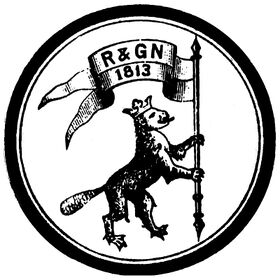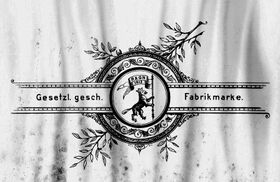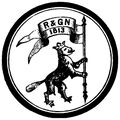Category:Rock and Graner
| Toy Brands and Manufacturers |
|---|
Rock and Graner |
The toymaking business of Rock & Graner of Goppingen (Wurtemburg), R&G, R&GN (1813-1904) had their origins in the C18th trading company Wißhack, which operated out of Biberach in the latter part of the Eighteenth Century, and started making and marketing toys in 1813. The company is now chiefly remembered for their beautiful wood-effect painted and laquered tinplate dollhouse furniture, and (towards the end of the company's life) for producing some of the earliest model railways and model railway stations, with some of their buildings being quite exquisite.
Although Rock & Graner's range didn't have an obvious linear successor, the company's activities in Wurtemburg helped to encourage the growth of a toymaking infrastructure in the region that then spawned Märklin and Lutz in the 1850s.
Origins
In 1769 the firm of Wißhack came under the control of Philipp Wißhack and his wife Anna Magdalena Wißhack. Philipp died in the 1780s and Anna Magdelena then married Gottfried Rock.
The business took off, but then Gottfried also died, and Anna Magdalena Rock, now twice widowed, took in Gottfried Wilhelm Graner to manage the business, then made him a partner, and married him off to her daughter Dorothea in 1804. In 1911 the matriarch Anna Magdalena died and her seat on the company was inherited by her son Christian Gottfried Rock, who married Maria Sartorious from Nuremberg in 1913 and started making and selling toys with the Rock & Graner trademark.
1813-1896, Rock & Graner (R&G)
Rock & Graner's toymaking business, focussing on painted and laquered tinplate manufacturing, expanded to the point where the company employed over a hundred people in the late 1830s, and was probably the largest toy manufacturer in Europe by the middle of the Nineteenth Century (ref: Baeker and Vaterlein), exhibiting in Britain at The Great Exhibition of 1851.
The Great Exhibition of 1851
Rock & Graner from Biberach exhibited lacquered tinplate wares and toys which brought much pleasure to the young visitors, but quite some extra work for the supervisors who continually had to remind the visitors not to remain standing in front of the booth but to make room for others as there was a host of visitors. Even the most common Englishman is not afraid of making a sacrifice when it comes to introducing his children to the world of industry and the knowledge of its products. The toys from Rock & Graner are not only offered in a wide variety, but they also display great taste, which cannot be praised highly enough because nothing is more saddening than children acquiring bad taste already from their toys. Two juries, one for metal goods and one for toys, awarded them the medal for this exhibition.
— Official "Great Exhibition 1851" bulletin , quoted in Baecker and Vaterlein (1982)
1896-1904, Rock & Graner's Nachfolder (R&GN)
With the death of "Heinrich Graner" in 1877, his brother Julius now owned the company, and sold it in 1896 to Oskaar Egelhaaf. Egelhaaf continued to run the company, as Rock & Graner's Nachfolder, R&GN ("Rock & Graner's Successor"), but although the company was an early producer of toy trains and railway buildings, Egelhaaf was apparently suffering from health problems, and seems that he no longer felt able to see himself running the company, deciding in 1904 to wind it up and liquidate its assets, a process that was eventually completed in around 1906.
External links
Media in category ‘Rock and Graner’
The following 2 files are in this category, out of 2 total.
- Rock and Graner RGN beaver logo.jpg 800 × 800; 127 KB
- Rock and Graner RGN trademark.jpg 1,600 × 1,038; 408 KB






